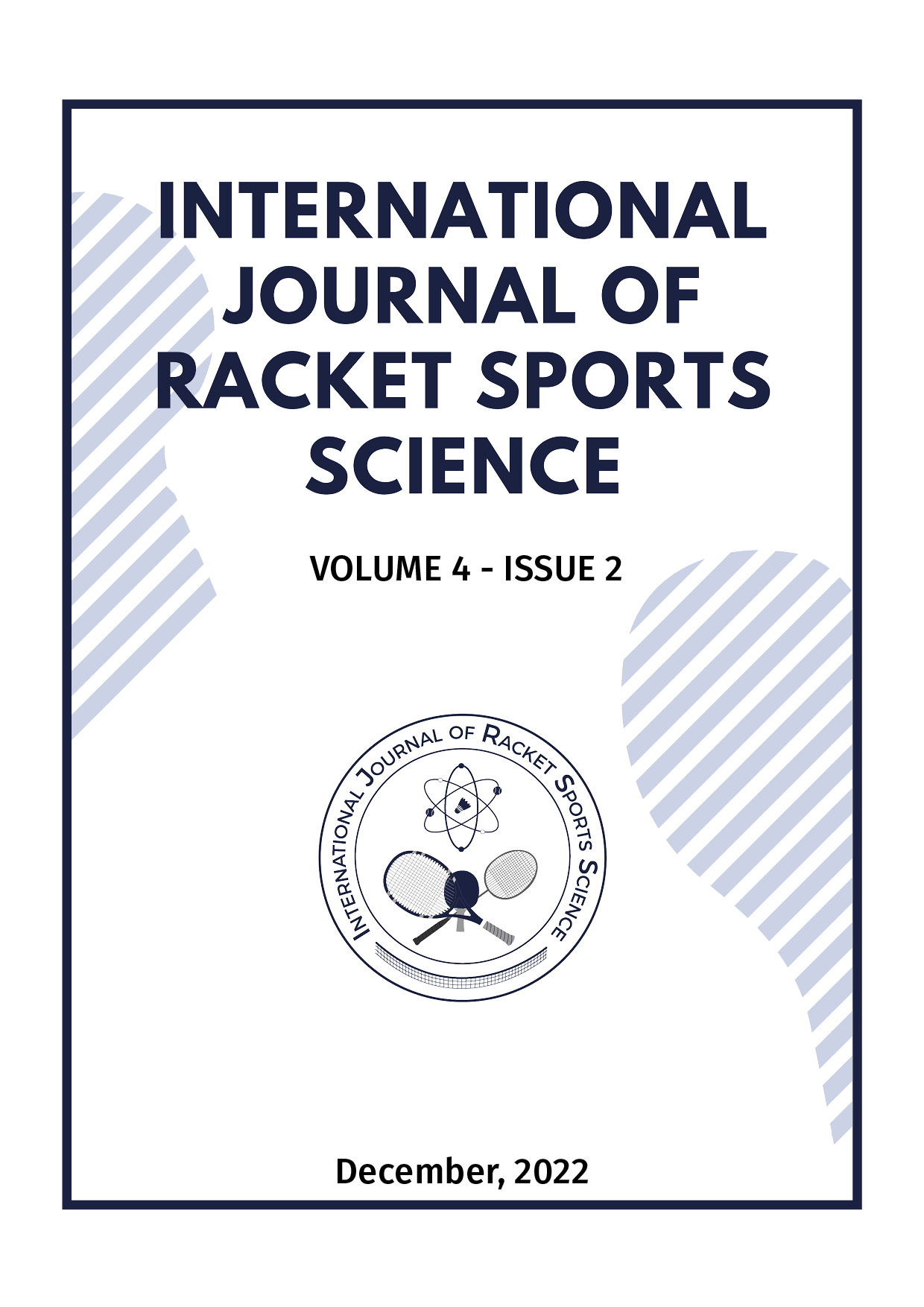Precisión de las estadísticas subjetivas de indicadores clave del rendimiento en tenis
Resumen
La recopilación de estadísticas mediante el análisis del rendimiento es común en partidos con jugadores profesionales de élite de tenis. Sin embargo, este tipo de estadísticas y retroalimentación evaluadas objetivamente son poco frecuentes en los niveles de rendimiento inferiores. Teniendo esto en cuenta, se desarrolló un método original que pide a los jugadores que evalúen subjetivamente las estadísticas de juego. El objetivo de este estudio era investigar la precisión de las estadísticas subjetivas en tenis. Los participantes fueron 30 atletas hombres universitarios; algunos de ellos habían participado en competencias nacionales. Los participantes jugaron un partido de práctica a 6 juegos y 1 set, e inmediatamente después evaluaron subjetivamente las estadísticas de indicadores clave del rendimiento tales como porcentajes, número de golpes y patrones de intercambio de golpes. Se añadieron estadísticas objetivas a través de videos grabados con una cámara digital o un teléfono inteligente. Los gráficos de Bland-Altman sugieren que evaluar subjetivamente sus indicadores de rendimiento les ayudó a confirmar las estadísticas objetivas. Aunque algunas variables mostraron sesgos fijos o proporcionales, las diferencias medias no fueron significativas (porcentaje de primeros saques: 1,733 % puntos; dobles faltas: 0,400 veces; jugadas de red: -0,767 veces; errores no forzados: -2,133 veces). Estos hallazgos apoyan la implementación de una evaluación subjetiva de los indicadores clave del rendimiento en jugadores de tenis con dificultades para aplicar evaluaciones objetivas.Descargas
Citas
Bland, J. M., & Altman, D. G. (1986). Statistical methods for assessing agreement between two methods of clinical measurement. Lancet, 1(8476), 307-310.
Butterworth, A., O’Donoghue, P., & Cropley, B. (2013). Performance profiling in sports coaching: a review. International Journal of Performance Analysis in Sport, 13(3), 572-593. https://doi.org/10.1080/24748668.2013.11868672
Butterworth, D. A., Turner, J. D., & Johnstone, A. J. (2012). Coaches’ perceptions of the potential use of performance analysis in badminton. International Journal of Performance Analysis in Sport, 12(2), 452-467.
Franks, I. M., & Miller, G. (1986). Eyewitness testimony in sport. Journal of Sport Behavior, 9(1), 38-45.
Hardy, B. R. J., Butler, R. J., & Hardy. (1992). The performance profile: theory and application. The Sport psychologist, 6(3), 253-264. https://doi.org/10.1123/tsp.6.3.253
International Tennis Federation. ITN Categories. Retrieved 27 October from http://www.tennisplayandstay.com/itn/itn-categories/itn-categories.aspx
Kolman, N. S., Kramer, T., Elferink-Gemser, M. T., Huijgen, B. C., & Visscher, C. (2019). Technical and tactical skills related to performance levels in tennis: A systematic review. Journal of Sports Sciences, 37(1), 108-121.
Kovalchik, S. (2021). Why Tennis Is Still Not Ready to Play Moneyball. Harvard Data Science Review.
Kovalchik, S. A., & Reid, M. (2017). Comparing matchplay characteristics and physical demands of junior and professional tennis athletes in the era of big data. Journal of sports science & medicine, 16(4), 489.
Kraak, W., Magwa, Z., & Terblanche, E. (2018). Analysis of South African semi-elite rugby head coaches’ engagement with performance analysis. International Journal of Performance Analysis in Sport, 18(2), 350-366. https://doi.org/10.1080/24748668.2018.1477026
Laird, P., & Waters, L. (2008). Eyewitness recollection of sport coaches. International Journal of Performance Analysis in Sport, 8(1), 76-84.
Mitsuhashi, D. (2002). A difference of the subjective analysis and objective analysis in the technical factor of tennis : An examination of the usefulness of a score sheet. Bulletin of Tokaigakuen University, 7, 183-193.
O’Donoghue, P. (2005). Normative Profiles of Sports Performance. International Journal of Performance Analysis in Sport, 5(1), 104-119. https://doi.org/10.1080/24748668.2005.11868319
The R Foundation. The R Project for Statistical Computing. Retrieved August 18 from http://www.r-project.org
Weston, N. J., Greenlees, I. A., & Thelwell, R. C. (2011a). Athlete perceptions of the impacts of performance profiling. International Journal of Sport and Exercise Psychology, 9(2), 173-188.
Weston, N. J., Greenlees, I. A., & Thelwell, R. C. (2011b). The impact of a performance profiling intervention on athletes' intrinsic motivation. Research Quarterly for Exercise and Sport, 82(1), 151-155.













